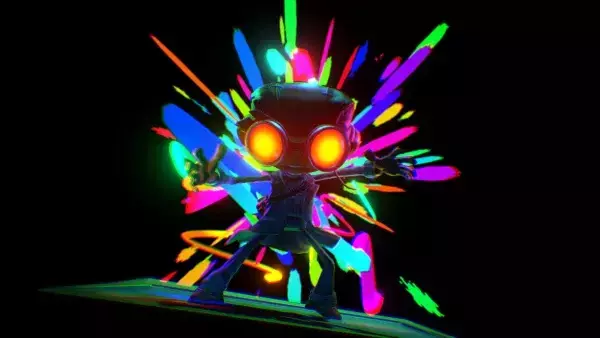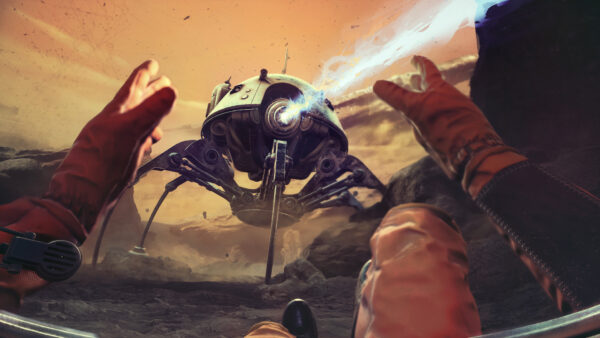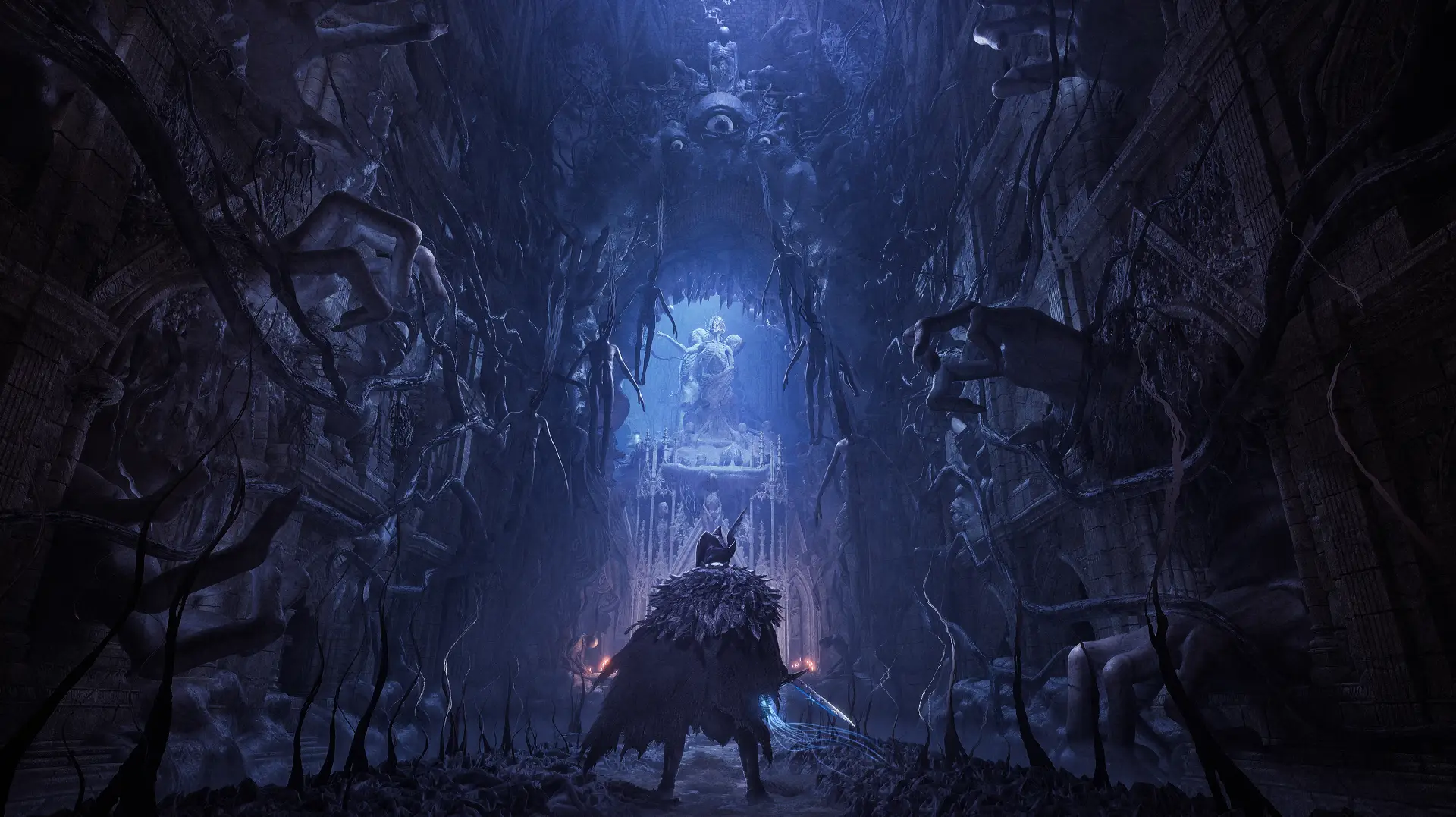
Does Hexworks’ Lords of the Fallen reboot have what it takes to be a worthy spiritual successor to Dark Souls 3? Alan Wen finds out…
I’m not sure I necessarily like Soulslikes. Or rather, it’s more accurate to say I just love FromSoftware’s games, because other studios’ attempts at emulating the Souls formula has always fallen short of the enduring brilliance of Dark Souls and Bloodborne. (Exceptions, such as Nioh and this year’s Wo Long: Fallen Dynasty, I’ve come to refer to as ‘Nioh-likes’.)
Lords of the Fallen, released in 2014, was one of the first games to follow in Dark Souls’ footsteps, and has since drifted into the realm of forgotten also-rans. However, its sequel – or reboot, given the decision to use the same name – may just win me over. Albeit not without punishing me first.
Set a millennium after the original game, Lords of the Fallen’s dark and macabre fantasy setting wouldn’t look out of place in the nightmares envisioned by Dark Souls creator Hidetaka Miyazaki. You play as a player-created Dark Crusader, on a perilous quest to defeat the demon god Adyr after the fall of an elite force of Hallowed Sentinels who’d been formed to prepare for his inevitable return. While this might sound like the plot of Zelda: Breath of the Wild, the more immediate comparison is Dark Souls 3, which Lords of the Fallen shares in its interconnected world design, as opposed to the open world of Elden Ring.
There are also other familiar hallmarks, though you get the sense that developer Hexworks has had to go out of its way to distinguish them through different terminology, such as Vigor instead of Souls and Vestiges instead of Bonfires. The latter are at least visually different, sprouting from the natural world with a flutter of blue butterflies hovering around them.
Where Lords of the Fallen really distinguishes itself is through the Umbral Lamp carried by your crusader. When you raise the lantern, it reveals a rift to another world. The game essentially has two worlds – Axiom, the world of the living, and Umbral, the world of the dead – existing in parallel with one another. You can think of it like Demon’s Souls’ soul and human states; indeed, you’ll end up in Umbral automatically if you die.
Yet while there are similarities, Umbral is often different in layout from Axiom, with new paths you otherwise couldn’t reach in the latter. But while holding out the lantern allows you to dip your toes into Umbral, which works for passing, say, a gate that was barred in Axiom, any action that results in you lowering the lantern also means Umbral disappears. There are also occasions where the level has been deviously designed to force you into the Umbral realm: venturing beneath what was a deadly body of water, or traversing platforms floating above a bottomless chasm, for example.
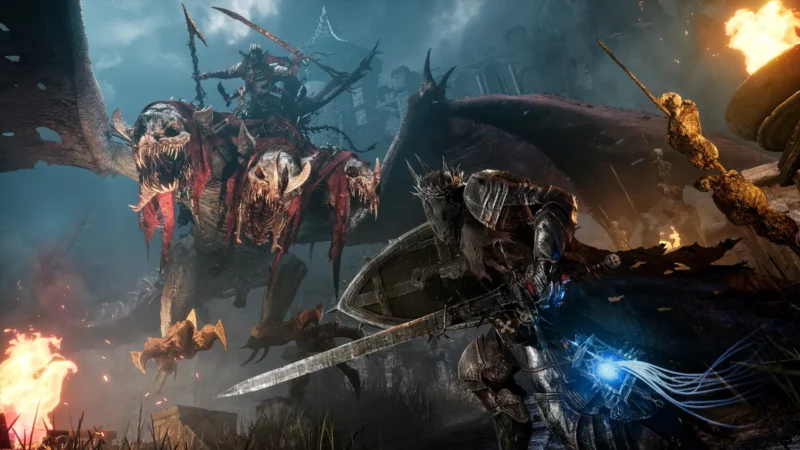
Credit: Hexworks/CI Games.
Although dying in combat takes you to Umbral, effectively granting you another chance to continue until you can find your way back to Axiom via a Vestige, choosing to enter Umbral also means you have already ‘died’. This makes those moments where you’re forced to enter the Umbral plane all the more sadistic. With its pale colour palette, Umbral is an unnerving place, and an icon of an eye gradually opens wider the longer you stay in this undead realm. It’s an idea inspired by Eternal Darkness and its sanity meter – though it’s safe to say I didn’t stick around to find out what would happen if that eye icon opened completely.
Umbral has other more disadvantages: a swig of your potion only partially restores your health, and undead enemies keep spawning. Your remaining ‘withered’ health, marked in grey, is regained by attacking low-ranking enemies. Conversely, a foe wearing an intimidating spiked helmet prompted me to avoid them entirely (a later attempt to fight the same enemy, with its spongy health bar, proved I should’ve stuck to my instincts).
Read more: King’s Field | FromSoftware’s debut paved the way for Dark Souls and Elden Ring
With the exception of that moment of cowardice, I do prefer taking enemies head-on with a melee build (incidentally, we were also recommended melee-based classes like Hallowed Knight or Warwolf over the magic-based ones available at the hands-on). This also gave me the chance to test my nerve with parrying attacks, which are handily mapped to the left bumper – the same button used for blocking with your weapon (naturally, the Umbral Lamp means you don’t have a spare hand for holding a shield). This makes parrying less risky to commit, since messing up the timing still means it registers as a block, though the latter does leave grey damage you’ll want to quickly regain.
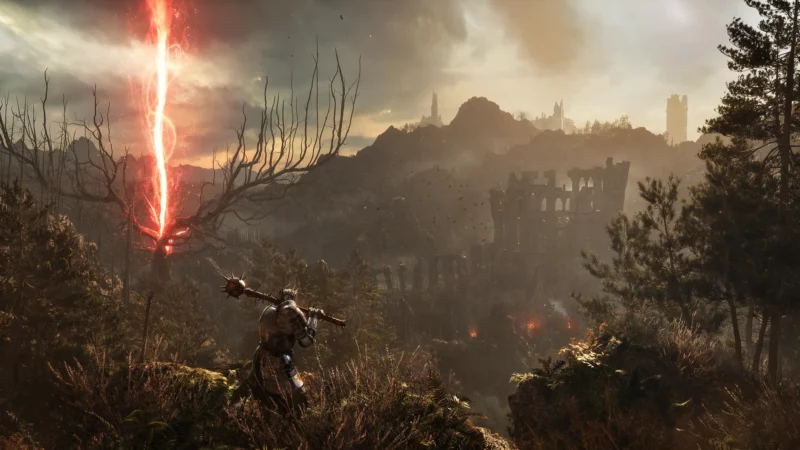
Credit: Hexworks/CI Games.
Even more interesting is how the Umbral Lamp can help you in battle. One attack, Soul Flay, uses the lantern’s power to pull an enemy’s soul out of their body; you then focus on dealing damage to the helpless soul in order to stagger its owner. To my astonishment, it also worked on one of the many tough mini-bosses I encountered. Another attack is Soul Siphoning, which has a number of uses including siphoning Soul Flay charges and Vigor. At one point, I ran into an enemy who seemed unbeatable until I raised my lantern and discovered there was some strange parasite tethered to them in Umbral. By siphoning this parasite, their defences were brought back down for a wallopping.
As you’d expect, the bosses are where the weighty combat is really put to the test. Pieta, a former devout disciple of the Church of Orius and now a corrupt angel of death, being one of your first formidable skill checks. These kinds of challenges, where you have to try and try again, is what Soulslikes are all about, though Lords of the Fallen does make them a bit more approachable, with both Umbral and a summonable NPC giving you a second life.
What I was less prepared for, though, is that Lords of the Fallen’s environments are just as treacherous as its combat. In fact, my biggest hurdle in the preview proved to be climbing a cliffside, host to narrow paths and precarious platforms where the slightest wrong foot can result in you tumbling to a lower level. This was made worse since my panicked attempts at dodging enemies often resulted in my rolling off into an abyss. I couldn’t say I had much love for the mandatory Umbral traversal sections here, either, which also included some mandatory platforming. Jumping may not be mapped to run and dodge like Dark Souls, but it’s still mapped to the interact button, so you need to be running for it to register.
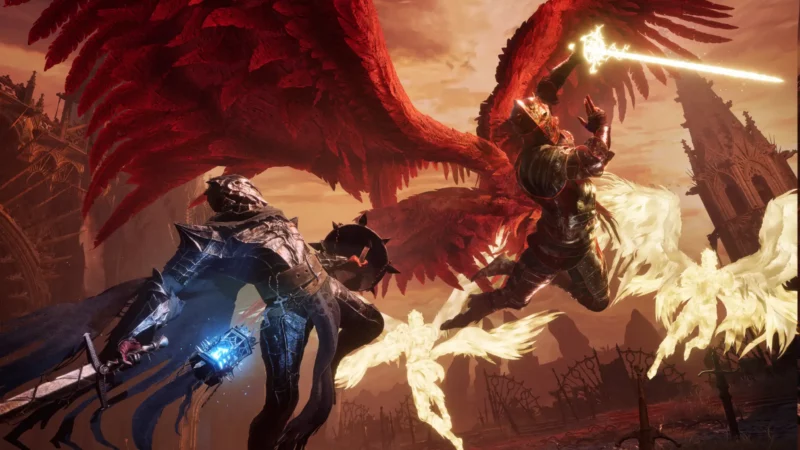
Credit: Hexworks/CI Games.
This leads to one other glaring issue. While the game looks beautiful in its own dark, twisted fantasy way, as another showcase for Unreal Engine 5, the frame rate suffered some pretty choppy performance throughout the hands-on, even though I’m sure all the builds were running on the most bleeding edge gaming PCs the publisher could get. Given the messy state several high-profile PC releases have had this year, there’s some obvious concern whether Lords of the Fallen will also be plagued with similar issues at launch, and whether that will also affect console performance, though with another two months until release, I would expect that Hexworks is prioritising optimisation.
These caveats aside, Lords of the Fallen is nonetheless shaping up to be a fitting continuation to the classic Dark Souls formula while introducing both improvements and new unique mechanics to distinguish itself. Hopefully, come the autumn, it lands Axiom side up.
Lords of the Fallen is out on 13 October for PC, PlayStation 5 and Xbox Series X/S.


